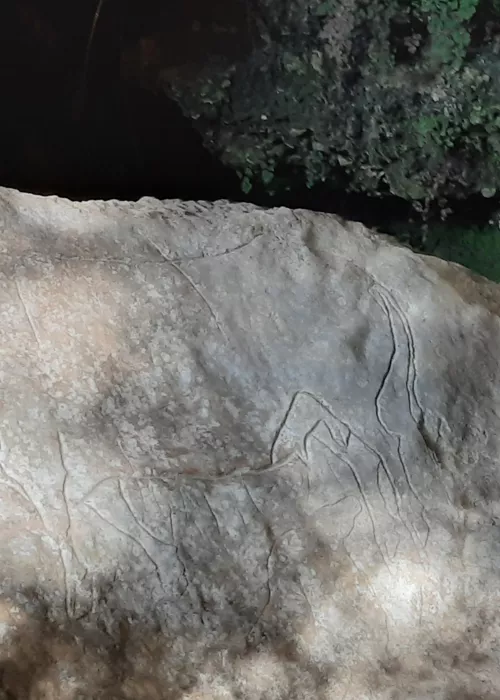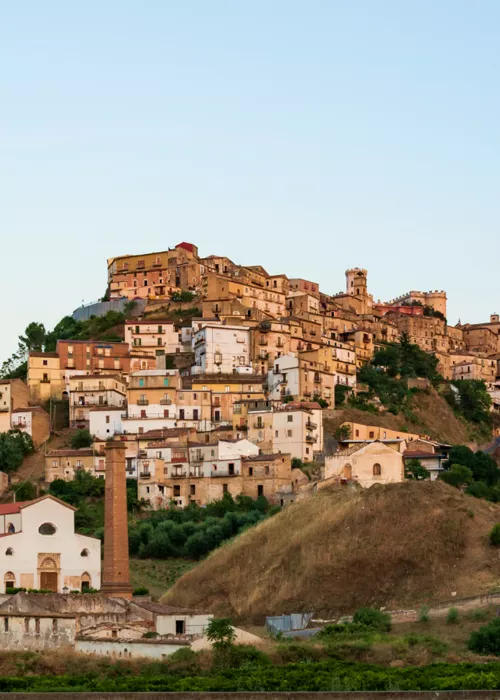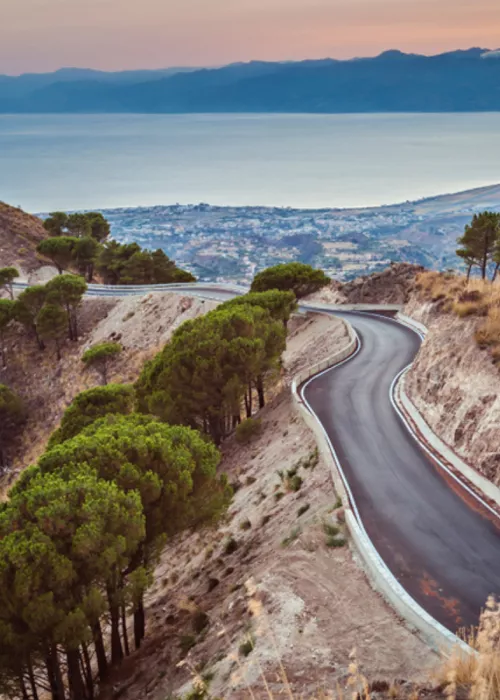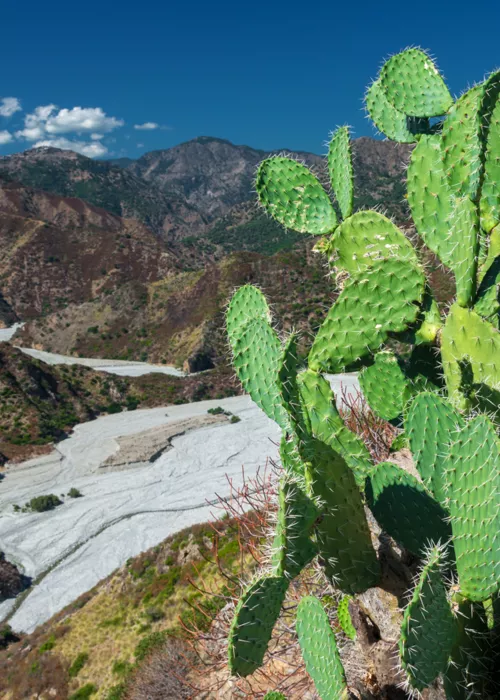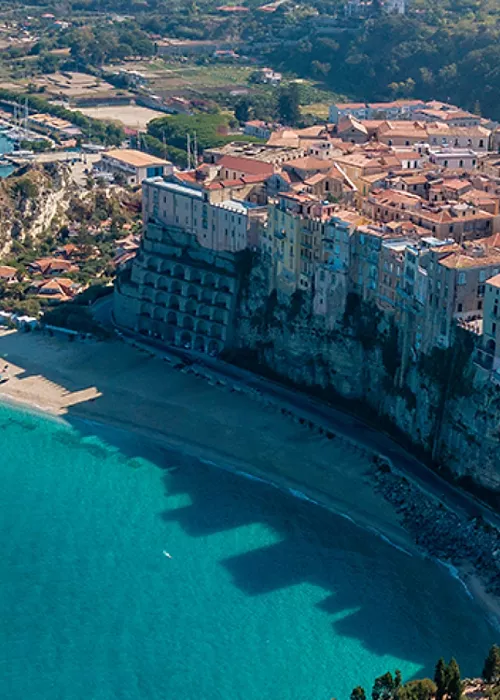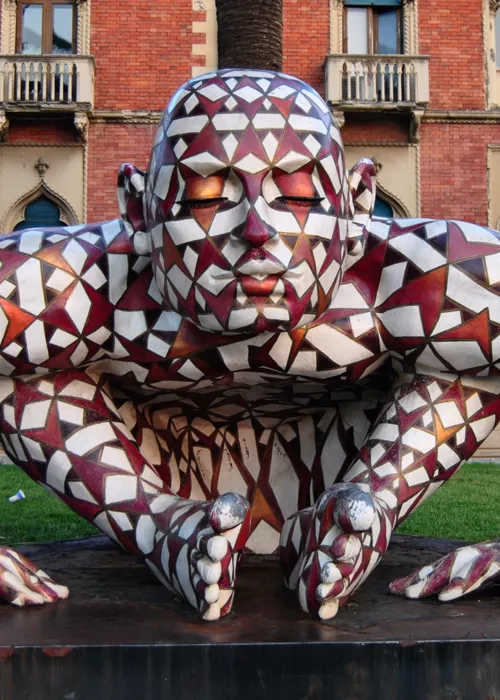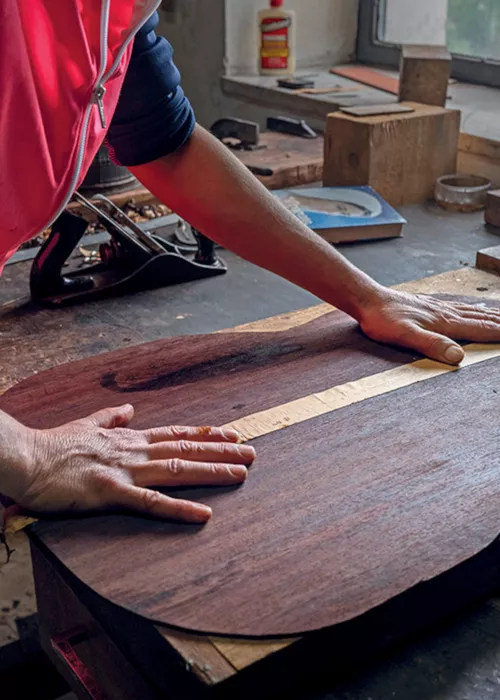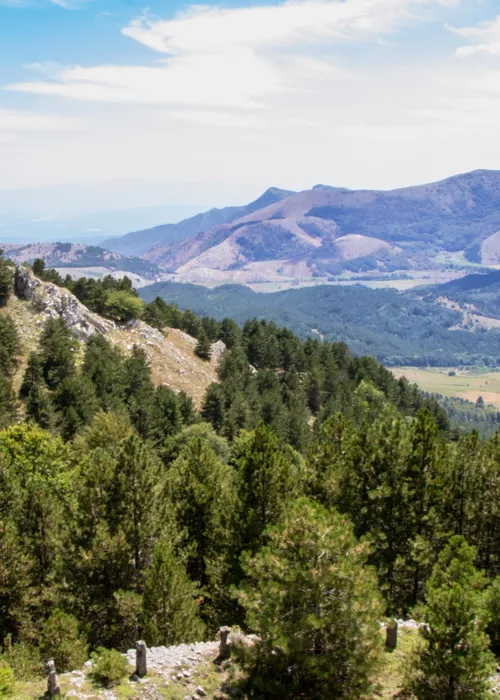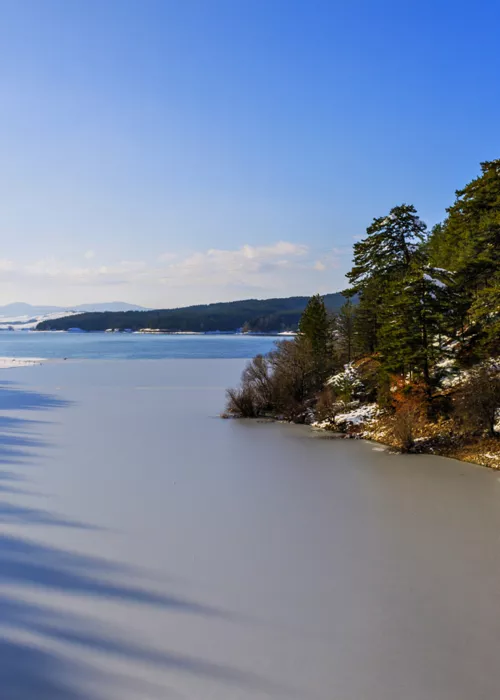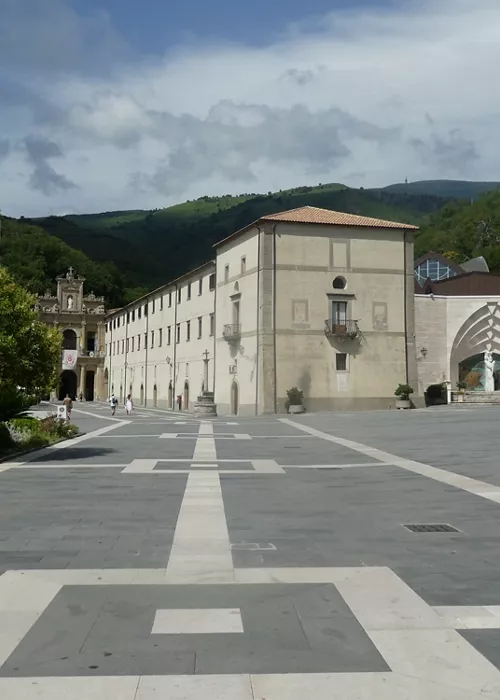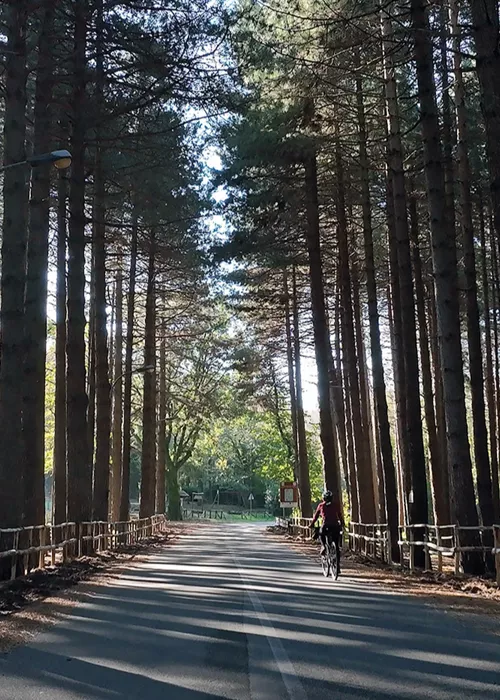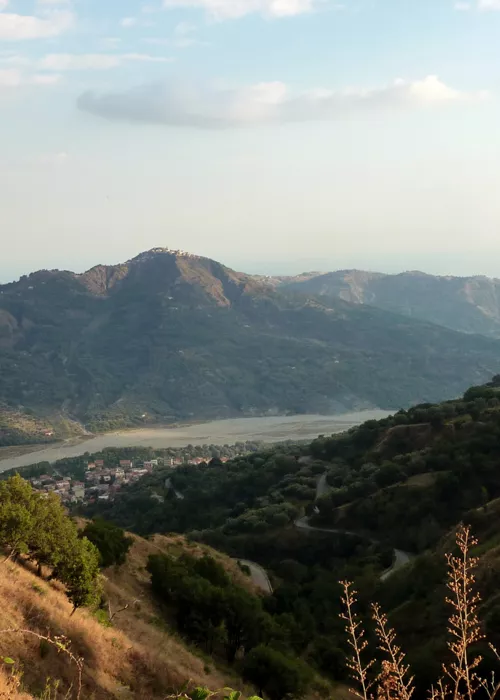The village of Pentedattilo

The first leg of your journey along the Ionian side of southern Calabria is a wonder in itself: it's the rugged village of Pentedattilo. From Reggio Calabria, you can reach it in a 40-minute drive along the sea road, admiring the view of the Sicilian coastline. Take a short break at Punta Pellaro and enjoy the awesome panorama, or maybe stop off at one of the many sandy beaches running alongside the road. If you look up, in the distance you'll spot the “five fingers” of Mount Calvario, on which the village of Pentedattilo is set like a gemstone. Here you can lose yourself in mazes of streets, stone houses and romantic balconies rich in history and a raw beauty you can almost touch. A visit to the ruins of the medieval castle gives you a bird's-eye view of the Aspromonte massif and the Ionian Sea. If you go through Bova, don't forget to stop at Melito di Porto Salvo if you want to take your fill of crystal-clear water, splendid beaches and endless bergamot!
From the beaches of Bova Marina to the old village of Bova

Travelling along the Jasmine Coast is a continuous up-and-down between the villages perched on the Aspromonte massif and the beautiful beaches. Among them is the splendid shoreline of Bova Marina, a fishing village as white as its sandy beaches, nestling amid green and fragrant citrus orchards. This is the heart of bergamot country. But there's much more to this area than a swim in the sea at Bova Marina. You might want to head for the Archaeological Park of Archeoder, where you can visit the remains of a Jewish synagogue dating from the late Imperial age (4th-6th centuries AD) - it's one of the oldest in the Occident.
You can ascend right up to Bova, a real gem of a town on the Aspromonte massif, and also the holder of an Orange Flag from the Italian Touring Club. This is another place where history and beauty merge with Grecanico tradition. Just listen to the locals talking: the Greek-Calabrian dialect is still spoken here by the inhabitants who are keen to preserve the culture of Magna Graecia.
The ancient city of Locri Epizefiri
We are now heading back up "the Boot" in the direction of Locri . You might want to pay a quick visit to Brancaleone, where jasmine is grown. We are heading now for Locri Epizefiri, an important town in the time of Magna Grecia and the birthplace of Europe's oldest set of written laws, but also of the poetess Nossis. The archaeological area and the Museum of Epizephryian Locris tell a story of glories and declines that begins in the 8th century BC. Visit the magnificent Greek theatre, which was cleverly built on the slope of a hill, to allow for better acoustics. Although thousands of years have passed, this place which saw the rise of countless actors, has lost none of its charm. Then there is the Greek necropolis and also a Roman one, the shrine of Persephone and the Ionic temple in which the famous Castor and Pollux were found. The wonders of this area rich in history are truly countless! This glorious artistic and cultural story was interrupted only in the 7th-8th centuries AD: incursions by Arab pirates led to the abandonment of Locri Epizefiri.
Gerace, the city of a hundred churches
As you head towards Gerace, look up to the sky - you might spot a hawk to show you the way. Legend has it that people fleeing Locri Epizefiri chose Gerace as a place to settle after fleeing their native city. In doing so, they laid the foundations for another city that would amaze visitors with its unsurpassed beauty in the centuries to come. This new city was no longer on the sea, exposed to incursions by Arab pirates, but stood at an altitude of 500 metres.
Under the Normans, Gerace became known as the "city of a hundred churches": today you can still admire about thirty of them. Among these is the majestic Cathedral, which combines Byzantine and Norman architectural elements and is the largest in Calabria! Listen to the echoing footsteps in the long aisles, admire the works of art and descend into the crypt.
Back outside, you can wander through the narrow streets of the village in search of a place to enjoy the exceptional view of the Locride area and the waters of the Ionian Sea, with the Aspromonte behind you.
Hungry? Then you should try the 'mbuttunata': aubergines stuffed, fried and dipped in sauce ... absolutely delicious!
Stilo and its wonderful church
After leaving Gerace, head to Stilo, which is the last stop on our itinerary. It takes an hour to get there by car, but once again the Jasmine Coast has plenty of surprises in store: there are many places to stop along the way and you'll be spoilt for choice. See the ruins of the ancient Kaulonia at Monasterace, or head for Riace to admire the famous Bronzes. And don't forget, everywhere you go there's an opportunity to take a dip in the Ionian Sea, or sample the local produce, from dried figs to ’nduja, and seafood. From the coast, you can follow the course of theStilaro river upstream, or explore the pictureseque slopes of the Aspromonte. Through the acres of vineyards and olive groves you will come to the ancient village of Stilo, which is laid out in tiers and built from dark stone houses. Explore the streets and enjoy the atmosphere of this beautiful landscape painting, perhaps enjoying a granita or a bergamot ice cream. Looking up, you can see the brick domes of the church that dominates the landscape on the slopes of Mount Consolino. Follow your gaze and keep climbing a little further, up to the gates of the Byzantine church Cattolica di Stilo, which has radiated beauty and magical charm over the village since the 10th century. Before you go in, take a minute to breathe in the air of the Aspromonte as it mixes with the ancient Ionian breeze and the scents of bergamot and jasmine.



